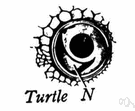nic·ti·tat·ing membrane
(nĭk′tĭ-tā′tĭng)n.
A transparent inner eyelid in many vertebrates that closes to protect and moisten the eye. Also called third eyelid.
American Heritage® Dictionary of the English Language, Fifth Edition. Copyright © 2016 by Houghton Mifflin Harcourt Publishing Company. Published by Houghton Mifflin Harcourt Publishing Company. All rights reserved.
nictitating membrane
(ˈnɪktɪˌteɪtɪŋ)n
(Zoology) (in reptiles, birds, and some mammals) a thin fold of skin beneath the eyelid that can be drawn across the eye. Also called: third eyelid or haw
Collins English Dictionary – Complete and Unabridged, 12th Edition 2014 © HarperCollins Publishers 1991, 1994, 1998, 2000, 2003, 2006, 2007, 2009, 2011, 2014
nic′titating mem′brane
n.
a thin membrane, present in many animals, that can be drawn across the eyeball for protection.
[1705–15]
Random House Kernerman Webster's College Dictionary, © 2010 K Dictionaries Ltd. Copyright 2005, 1997, 1991 by Random House, Inc. All rights reserved.
nic·ti·tat·ing membrane
(nĭk′tĭ-tā′tĭng) A transparent inner eyelid in birds, reptiles, amphibians, and some mammals that protects and moistens the eye without blocking vision.
The American Heritage® Student Science Dictionary, Second Edition. Copyright © 2014 by Houghton Mifflin Harcourt Publishing Company. Published by Houghton Mifflin Harcourt Publishing Company. All rights reserved.
ThesaurusAntonymsRelated WordsSynonymsLegend:
| Noun | 1. |  nictitating membrane - a protective fold of skin in the eyes of reptiles and birds and some mammals nictitating membrane - a protective fold of skin in the eyes of reptiles and birds and some mammalsprotective fold - a flap of tissue that protects what it covers haw - the nictitating membrane of a horse |
Based on WordNet 3.0, Farlex clipart collection. © 2003-2012 Princeton University, Farlex Inc.